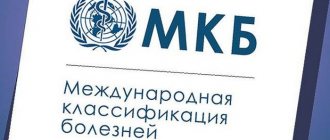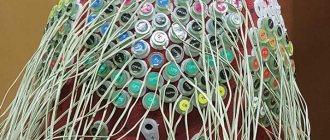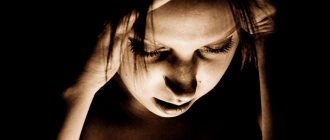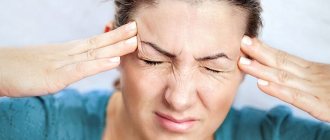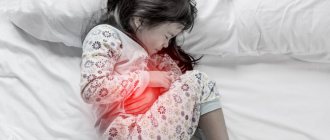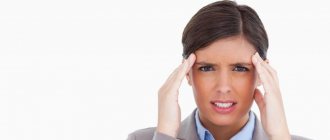Migraine, or hemicrania, is an ancient and quite common disease from which many great people suffered, such as Karl Marx, Isaac Newton, Charles Darwin, Napoleon Bonaparte, Lewis Carroll.
According to scientists who have studied this disease, people with the following character traits are often susceptible to migraines: determination, active life position, responsibility, as well as a tendency to depression, vulnerability, anxiety, irritability and aggression.
Causes of migraine
The exact causes of migraine symptoms have not yet been studied. The main role is played by hereditary burden. There are provoking factors, the presence of which contributes to the appearance of migraine headaches. These include:
- emotional stress;
- menses;
- hunger;
- insomnia;
- weather change;
- excessive sleep;
- food products (chocolate, citrus fruits, bananas, fatty cheeses);
- alcohol.
How to treat?
Treatment can be medicinal or non-medicinal.
Drug therapy
Medicines are taken to relieve headaches and spasms. The drugs used in this case can be divided into three groups:
- Antispasmodics and analgesics. Many of them can be bought at a pharmacy without a doctor's prescription. These include: nurofen long (longer-acting), ibuprofen, spasmalgon, duspatalin, trimedat, nosh-pa and others.
- Medicines containing ergot. They tone the blood vessels of the brain and eliminate pain. This group of drugs has some side effects and is prescribed by a doctor. These medications will not be sold in pharmacies without a prescription. Example: ergonovine maleate, ergotamine hydrotartrate.
- Triptans. They relieve not only vasospasm and headache, but also the symptoms of complicated migraine - nausea, vomiting, fear of light and noise.
There is no need to self-medicate; you should take all medications only as prescribed by a doctor to avoid any complications.
Non-drug treatment
In addition to the use of medications, there are many other ways to get rid of this disease . These include:
- being in a quiet and calm environment;
- shelter from bright light;
- maintaining a proper lifestyle and the necessary diet;
- acupressure - influencing active points on the patient’s body using hands and fingers;
- acupuncture - influencing active points using special thin needles;
- body massage;
- hydrotherapy;
- physiotherapy (medicinal electrophoresis, local cryotherapy, use of baths, etc.) aimed at normalizing vascular tone;
- traditional medicine, for example, a compress on the forehead with burdock leaves, rubbing the temples with lemon slices, etc.
It can be noted that non-drug therapy can easily be carried out at home using improvised means.
Before you start doing anything, you need to consult with your doctor, because treatment methods are individual for everyone.
Migraine classification
ICD-10 identifies the following forms of migraine:
- without aura;
- with an aura;
- chronic.
In addition, migraine can have a complicated course and be regarded as an episodic syndrome.
Migraine without aura
It is regarded as a simple form of the disease. Accompanied by recurring headache and typical associated symptoms.
Migraine with aura
An aura is a cerebral symptom that occurs shortly before a headache occurs. The following subtypes of migraine with aura are distinguished:
- with a typical aura - expressed by sensitive, visual, speech disturbances. The duration of this form of the disease is 1 hour;
- with brainstem aura – characterized by dizziness, tinnitus, impaired consciousness, dysarthria, diplopia, ataxia. There is no muscle weakness;
- hemiplegic – accompanied by reversible muscle weakness and symptoms characteristic of simple migraine;
- retinal – characterized by darkening of the eyes, flickering stripes or spots.
Chronic migraine
In chronic migraine, headaches occur daily or almost daily. The diagnosis is made when signs of the disease are present for more than 2 weeks per month for 3-4 months. Chronic migraine can occur with or without an aura.
Instrumental and laboratory studies
The aura does not always have pronounced manifestations - often all the symptoms boil down to minor dizziness, after which a severe attack of headache occurs.
In this case, in order to understand the cause of the pain and determine whether it is a migraine or not, it will be necessary to conduct some instrumental and laboratory tests:
- Measuring blood pressure levels. Taking into account the fact that in the vast majority of cases headaches are caused by an attack of hypertension, measuring blood pressure will help determine the diagnosis. Purely theoretically, during a migraine attack, an increase in blood pressure is possible due to the release of adrenaline into the blood and activation of the sympathetic nervous system, but if it occurs, it will be insignificant.
- ECG - this test allows you to confirm or exclude the presence of heart problems.
- An electroencephalogram is a study that will allow you to assess the functional state of the cerebral cortex.
Please note that in this case, an accurate diagnosis will be of fundamental importance - antihypertensive drugs and conventional painkillers will not bring the expected result for migraine.
Migraine stages
Migraine attacks occur in several stages. Among them:
- Prodrome. In other words, harbingers of headaches. The occurrence of these symptoms is observed in 50% of patients suffering from migraine. Pathological signs include irritability, emotional lability, weakness, thirst, swelling, muscle tension in the neck and back of the head. These symptoms may occur several hours or days before the attack.
- Migraine aura. This is a set of neurological symptoms that occur immediately before a migraine attack. In accordance with this, violations are distinguished:
- visual (flashes or colored lines, loss of areas of vision;
- motor;
- sensitive (numbness, tingling);
- speech.
The intensity of the listed migraine symptoms gradually increases. The duration of a migraine aura can be 1 hour.
- Stage of headache. Signs of a migraine are an intense headache that appears on one side (less often bilateral). Its severity increases even with moderate physical activity. A migraine attack is accompanied by nausea, vomiting, and increased sensitivity to light and sounds. The duration of headache without appropriate therapy can reach 3 days.
- Postdrome. The stage that occurs after the headache has subsided. Symptoms of postdrome include pale skin, yawning, irritability, and fatigue. These symptoms of migraine may persist for 2 days.
Why is there often confusion? How do the symptoms of an ocular migraine differ from an aura?
Sometimes an “ocular migraine” refers to the aura that occurs before a typical migraine attack. It can manifest itself in different ways, including visual impairment:
- Flashes of light, bright spots, “lightning” before the eyes.
- The appearance of “blind spots” is called scotoma.
- Twinkling stars.
The fundamental difference between the aura is that these sensations arise in both eyes. Sometimes they precede regular migraine attacks, and sometimes they occur without headache.
How can I check if symptoms are occurring in only one eye? It’s very simple: you just need to alternately close your right and left eyes, leaving the other open.
Very often, the word “ocular migraine” refers to different conditions. If your neurologist diagnoses you with this, ask what it means.
Diagnosis of migraine
The diagnosis is made in the presence of typical complaints and a characteristic medical history. At the initial consultation, the neurologist conducts a thorough survey. During this, the time of onset and frequency of headaches, the duration of symptoms, accompanying symptoms, and the presence of hereditary burden are determined. In addition, the doctor needs to clarify the medications that relieve pain, if any. Additional methods for diagnosing migraine are:
- REG (rheoencephalography);
- EEG (electroencephalogram);
- Ultrasound doppler scanning (ultrasound duplex scanning of cerebral vessels).
They are prescribed only if a symptomatic migraine is suspected. Otherwise, the above methods have no diagnostic value, since they do not reflect any specific changes.
When making a diagnosis, it is recommended to rely on diagnostic criteria. Let's consider the criteria characteristic of the 2 most common forms of migraine - with and without aura.
- With aura:
- the presence of at least 2 attacks that meet diagnostic criteria;
- presence of at least two symptoms and the following:
- visual disturbances or unilateral sensory impairment;
- one of the clinical signs of aura develops within at least 5 minutes;
- The duration of each symptom is at least 5 minutes.
- headache is not associated with other disorders;
- headache is accompanied by at least one of the following symptoms:
- visual (reversible visual impairment, flickering spots or stripes);
- sensitive (tingling, numbness);
- speech (reversible speech disorders).
- Without aura:
- the presence of at least 5 attacks that meet diagnostic criteria;
- the average duration of headache is 4-72 hours;
- headache is accompanied by at least one of the following symptoms:
- vomit;
- nausea;
- hypersensitivity to light;
- hypersensitivity to sounds.
- headache is not associated with other causes;
- headache is characterized by at least two of the following:
- one-sided;
- pulsating;
- intense;
- worsens with physical activity.
What happens in the head during a migraine?
The main internal cause of the attack is an imbalance of serotonin, its effect on blood vessels. We are talking about the interaction of vascular, nervous and hormonal changes in the brain. If too much serotonin and other substances are released in a short period of time, sterile inflammation of the cerebral arteries occurs (without infection). As a result, the pulse wave causes severe pain and vasodilation. Migraine develops (ICD-10 disease code: G43.0. - without aura, G43.1. - with aura).
The attack usually occurs in one half of the head and is manifested by throbbing, pulling or stabbing pain. When this condition occurs more than 15 days a month, it is said to be a chronic form of the disease. It occurs more often between the ages of 25 and 45, affecting children and adolescents in 15% of cases.
Migraine treatment
The main goal of treatment for migraine attacks is to alleviate the course of the disease, improve the quality of life and reduce the risk of chronicity of the disease. Treatment includes:
- relief of acute pain syndrome;
- relapse prevention.
Treatment of acute migraine attacks
The following drugs are used to relieve pain:
- Nonsteroidal anti-inflammatory drugs (ibuprofen, ketorolac, diclofenac, acetylsalicylic acid, paracetamol). It is important to remember about the possibility of developing an overuse headache. It occurs due to excessive use of painkillers.
- Antiemetics. Prescribed due to the presence of severe atony of the stomach and intestines, which accompanies migraine. Antiemetic drugs stimulate intestinal motility and normalize absorption.
- Triptans. They are the “gold standard” of migraine therapy. The drugs block the release of pain neuropeptides. The effect occurs 20-30 minutes after ingestion.
It is recommended to start therapeutic measures as early as possible. It is advisable to take the drug within the first 30 minutes after the onset of the attack. Therapy is selected individually by the attending physician.
Prevention of migraine recurrence
Prevention of relapse is indicated for patients suffering from chronic and frequent episodic migraines. This type of therapy adheres to the following goals:
- reduction in the number and severity of migraine symptoms;
- reducing the frequency of using medications to relieve headaches;
- improving quality of life.
Indications for prescribing preventive therapy are:
- presence of migraine attacks at least 3 times a month;
- duration of headache for at least 3 days;
- symptoms cause disorientation;
- concomitant conditions that reduce quality of life (depression, dyssomnia);
- risk of developing permanent neurological symptoms.
The duration of the therapeutic course for migraine is selected on an individual basis. Preventive therapy involves long-term use of medications. On average it takes from 2 to 6 months. In this way, it is possible to minimize the number of migraine exacerbations. For the purpose of prevention, the following drugs are used:
- non-steroidal anti-inflammatory drugs;
- anticonvulsants;
- antidepressants;
- calcium channel blockers;
- beta blockers.
Migraine treatment begins with minimal doses. If ineffective, the dosage can be gradually increased. This way, the risk of side effects is minimized. It is recommended to start migraine prevention with monotherapy. If there is no therapeutic effect within 2-3 months, the drug can be replaced or enhanced with another drug. When choosing a drug, it is necessary to take into account the presence of concomitant conditions.
Non-drug methods of prevention
A migraine attack can be prevented not only with the help of medications. Cognitive behavioral therapy can reduce stress levels and correct pain syndrome. Through sessions with a doctor, patients are able to learn psychological and muscle relaxation techniques. Cognitive-behavioral therapy is indicated for persons with signs of emotional-personal and hypochondriacal disorders. In severe cases, observation by a psychiatrist is necessary.
Neck massage, acupuncture, therapeutic exercises and manual therapy have a positive effect. In the absence of effect from drugs, the use of various instrumental methods is indicated. Among them are stimulation of the occipital, vagus and supraorbital nerves.
Forecast
With timely consultation with a doctor and selection of adequate therapy, the prognosis for life is favorable. Patients are under dynamic observation by a doctor for 4-12 months after diagnosis. Further visits take place once every 2-3 months to assess the correctness of the selected therapy. Migraine attacks must be prevented in a timely manner. To do this, it is recommended to modify lifestyle, avoid provoking factors, and follow prescribed therapy.
At the multidisciplinary clinic “Zdorovye”, qualified neurologists are involved in the diagnosis and treatment of migraines of any severity. The center is equipped with modern equipment that allows differential diagnosis of various conditions, the course of which is similar to the symptoms of migraine. Appointments can be made by telephone. You can also leave a request on the official website. The administrator will contact you to clarify the details of the recording.
Prevention: how to avoid an attack?
In order to avoid the occurrence of this disease, you need to be less nervous and worry about various reasons. This is the main key to success in preventing migraine with aura.
Knowing the triggers of this disease, you need to try to prevent them so that the attacks do not return . Set yourself in a good mood, pronounce various affirmations, that is, self-hypnosis expressions that will help get rid of negative thoughts (“I like this weather”, “I am kind”, “I am calm”, etc.)
When the first symptoms appear, you need to consult a doctor and do not hesitate to make this decision. The sooner you start treating this disease, the sooner you can get rid of it.
Migraine with aura is a disease that causes a lot of trouble and suffering . How to get rid of migraine with aura? It is necessary to consult a specialist in time and begin appropriate treatment, as well as monitor your daily routine, eat right, and worry less and be nervous. We must remember that our health is in our hands!
